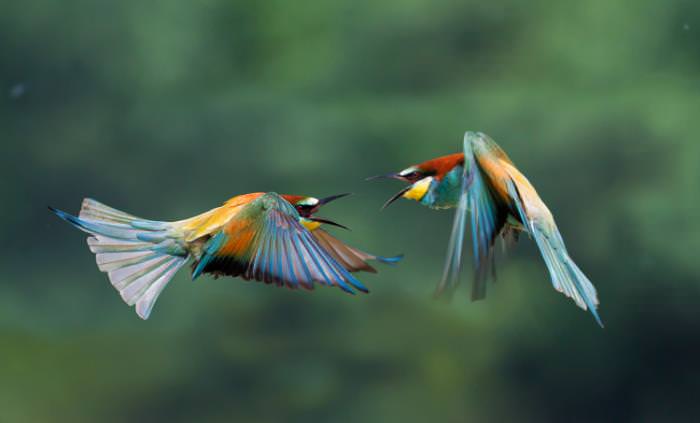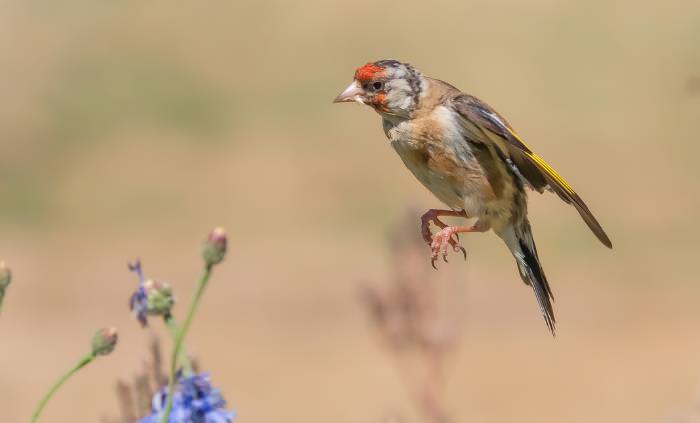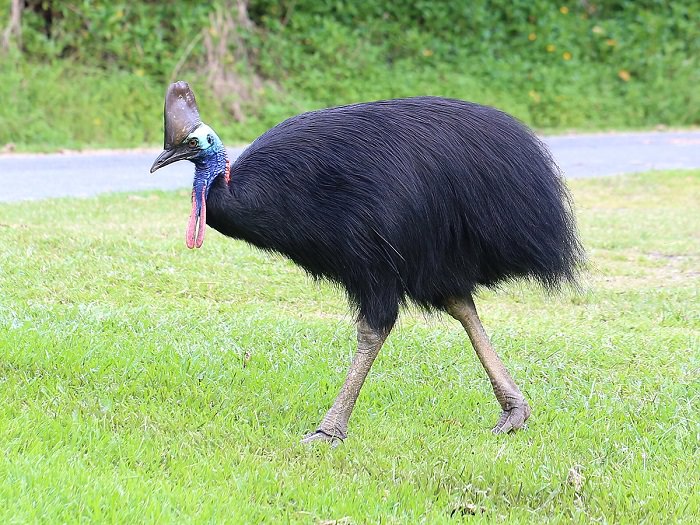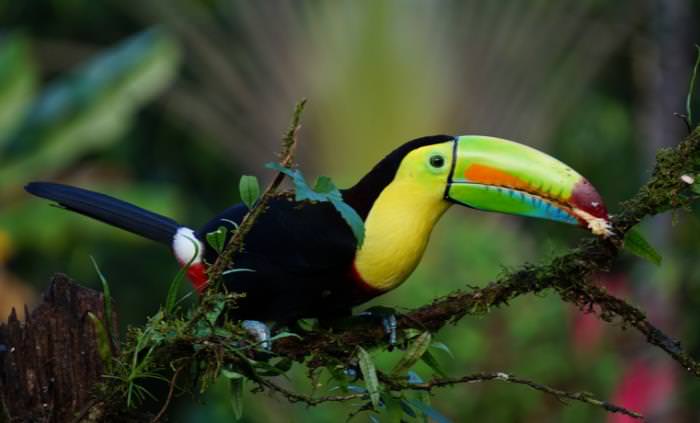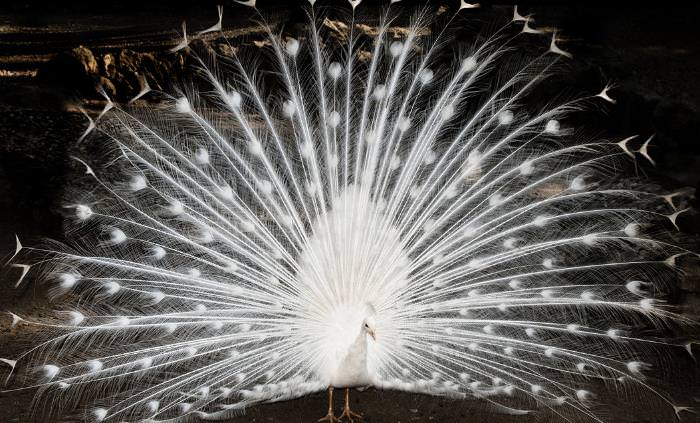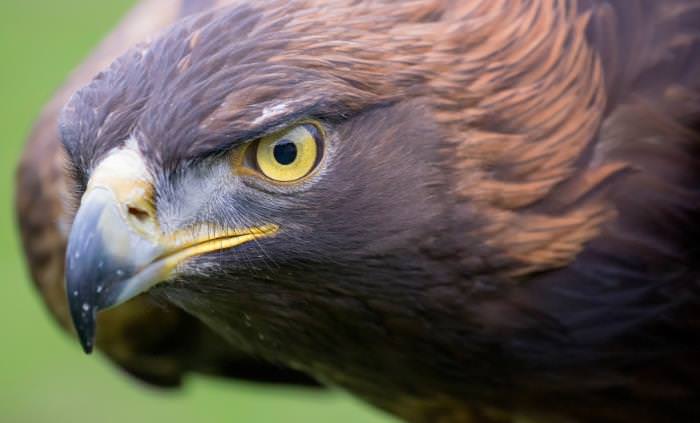The flight of the bird
Aerodynamic anatomy
Most of us know that in general, the feathers in combination with the structure of the wings and their movement, are what enables a bird to fly. But did you know that many birds even have hollow bones? This contributes to an all-over low body mass, and when the powerful muscles in the wings flick away, they can conquer the wind effortlessly.
But how do they steer?
The steering is done with small movements of the wing and tail. The bird's physique is what determines the nature of its flight: while some fly high altitudes, using swift short movements, others will fly low, using long but powerful movements. Hummingbirds can fly up to 60 mph (96.5 km/h) and in any direction, including backward and straight upwards.
Flightless birds
Some won't fly at all. Such is the Kiwi, the ostrich, the emu, and the cassowary, as depicted in the picture above. And, you guessed it- the penguins. Why do they all have feathers and wings, then? These are used mainly for insulation purposes, like fur. The wings were used to fly eons ago. Over millions of years of evolution, these birds lost their ability to fly because they didn't need to fly: in their migrations, they found an ecosystem that provided them enough food so they didn't have to fly looking for more. Another reason could be the lack of predators- this is likely the case of the Kiwi, for instance, who lives on an island where predators couldn't reach.
The birds' anatomy
The beak
The beak can tell us a lot about a bird's nutrition. Longer, thinner beaks are mainly used for pin-picking small insects and worms from the ground. Thicker, cone-shaped beaks will be used to crack seeds. Some birds have developed special beaks, like the pelican. Some birds use other techniques, like crows and vultures: they drop hard nuts or bones from high altitudes to crack them. Hummingbirds have a long tubular beak they use as a straw to feast on nectar. They do so every 15 to 20 minutes to keep their energy and high-speed up.
The beak is also used for grooming and nesting. Most birds' diets will be pretty light, while birds of prey can eat up to 50% of their body weight. The larger ones will even catch prey that is heavier than their own body mass. But none can measure up to the toucan- these birds have the largest beak of all birds, in relation to body size!
Birds don't have teeth, so once they pick a bite with their beak they swallow it whole. Instead of teeth, they have an organ called a gizzard- a muscly, powerful stomach that helps them break down large bites of food.
Feathers
But the real interesting thing is their feathers. Did you know birds shed their feathers, much like our pets shed their fur? They do this twice a year, sometimes even 3 times, in a process called molting. Their feathers don't keep on growing and growing as the hair on our heads does. So once a feather is compromised, it will have to be replaced.
Eyesight
As expected, even their perception is unlike any other animal. Their eyesight is different than that of mammals. Most bird' eyes are located at either side of their heads, providing them a wider field of view than ours, like a wide-lens camera. But this comes with a price: they don't have such good depth perception. And that is why, often in the springtime, they're likely to fly crashing into windows. This is because in spring, when they get territorial, they're more likely to try and chase off any bird that comes near their territory. Come nesting season, they become less aggressive.
Birds of prey have much better eyesight. Golden eagles can spot a small rodent from 2 miles (3.2 kilometers) away. They will have a clear vision as long as it's light outside, including in the dim dawn light. But come nightfall, they can't manage that well; the pupil of an eagle’s eye is not big enough for night vision.
Fun, bite-size facts
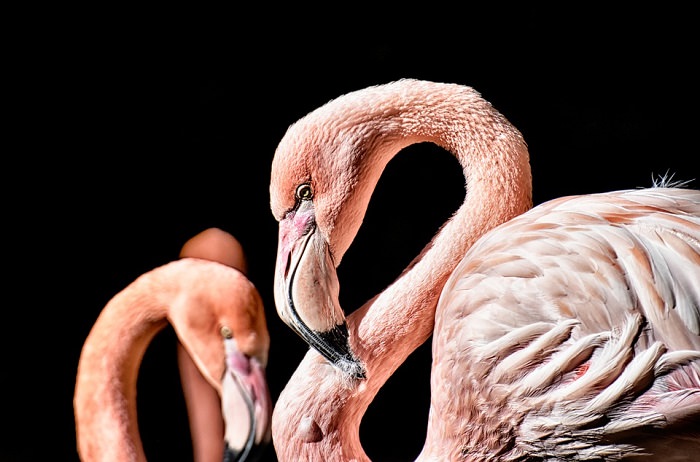
- Approximately the size of a billiard ball, the Ostrich's eyes are the largest of any animal that lives on land. Their eyes are actually bigger than their brains.
- When napping in groups, ducks appoint guards that sleep with one eye open. They thus determine which side of the brain will remain awake.
- Some swiftlets build nests entirely out of their hardened saliva.
- The Australian Bassian farts toward the ground to expose worms and other insect prey, which are drawn to the smell.
- Some birds can nap midair.
- The Migratory Bird Treaty Act prevents domestic birds from being bought or sold for commercial purposes. Thus, if you ever see a bird in a movie, it's either imported or a computer effect.
- The bearded vulture's diet consists of 70%-90% bone: they drop those to the ground so they shatter and expose the bone marrow. They're the only species in the entire world that dresses up to assert dominance: they dye their feathers red with soil.
Source: MentalFloss, MentalFloss, Britannica, FunKidsLive

